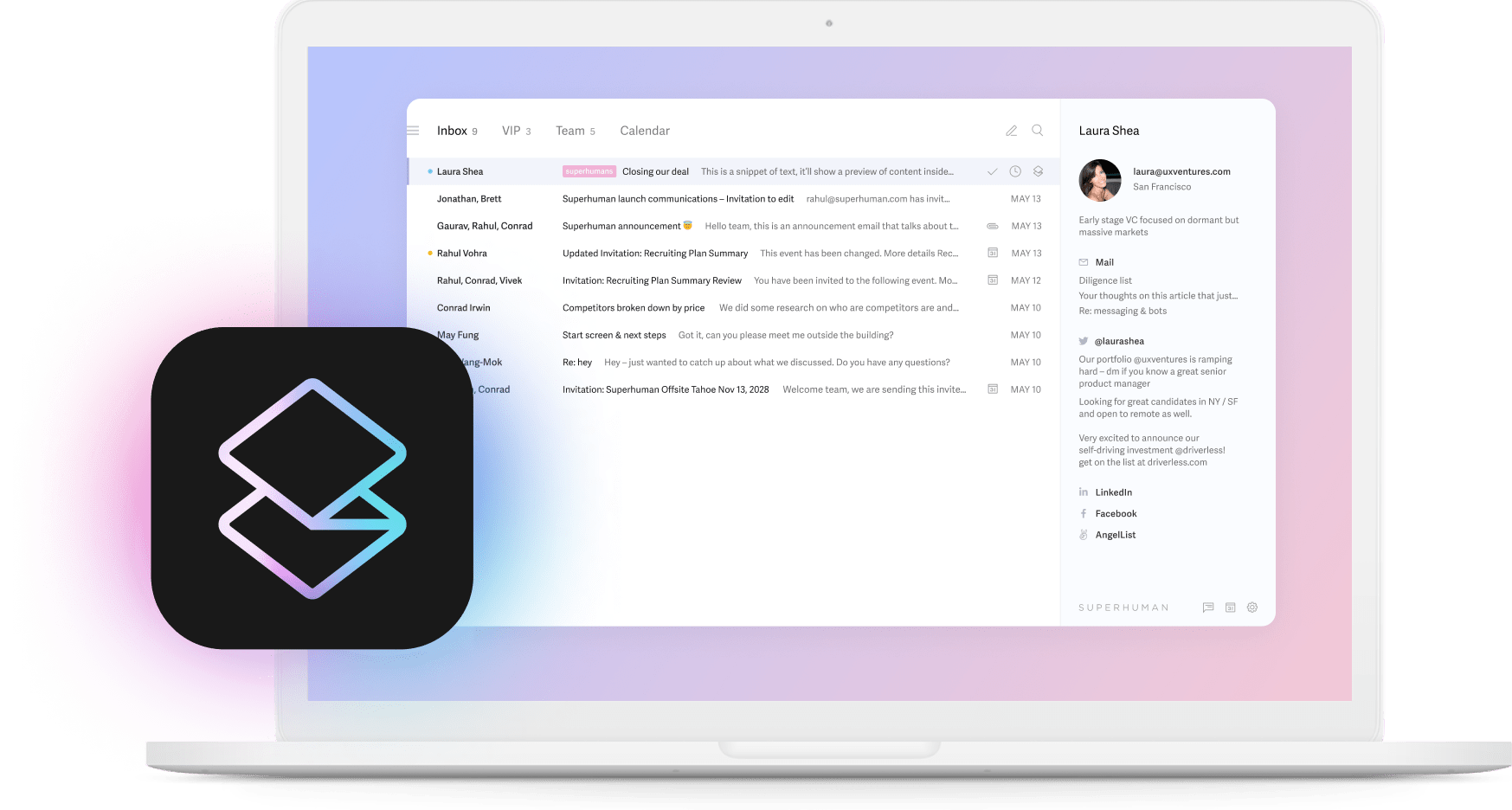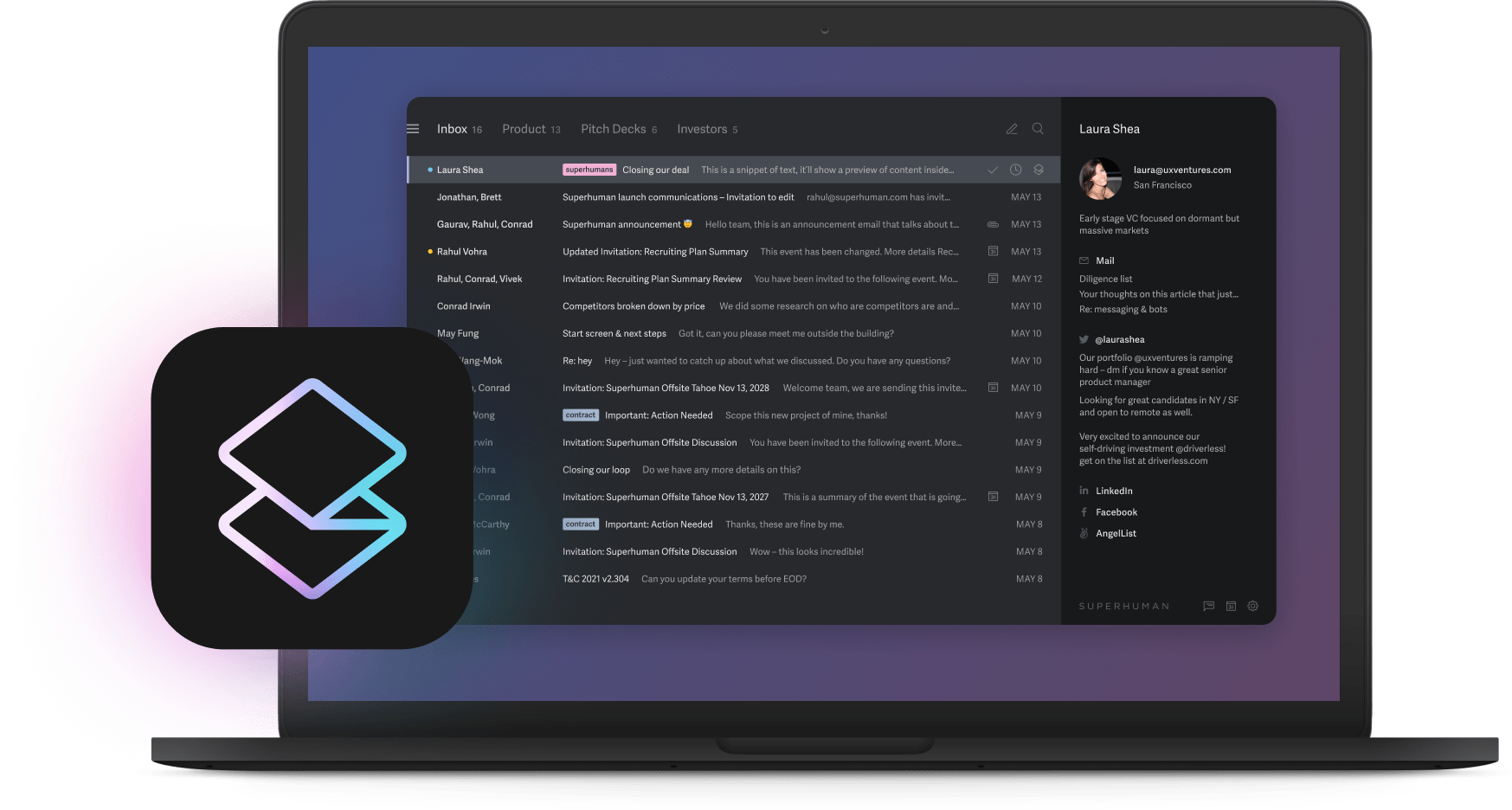
Imagine that your mind was like water.
Daily interruptions would be no match for your flexibility. Your free-flowing thoughts would be a fertile ground for creativity and inspiration. You would elegantly maneuver around unwanted distractions and stay focused on your goals throughout the day.
Essentially, you would be in total control of your day and the master of your time. Flexible and agile, you could easily handle whatever came your way, work efficiently, and remain productive.
This is a mind like water. And it's entirely possible to achieve!
If you want to learn how to move through your day with flexibility, confidence, and control, read on. We'll introduce you to the "mind like water" concept and outline a 5-step system to help you organize your time, manage distractions with ease, and achieve this fluid state of being.
What is a "mind like water" and how can it help you focus better?
Water flows with grace and power, and it has zero limitations. It moves freely without hindrance, stays flexible in its movement, and elegantly morphs into the structure surrounding it.
When our minds move with this kind of flexibility and control, we become the master of our day and no longer impulsively react to incoming thoughts and distractions.
The term "mind like water" hails from ancient martial arts teachings and was most recently introduced by David Allen in his popular book, Getting Things Done.
Ancient karate masters refer to the mind like water as an ideal state while practicing karate. This mind is calm, and responds appropriately to external interaction and stimuli.
In contrast, if your mind is not relaxed and flexible, it is in a reactive state: unable to achieve flow.
Allen explains mind like water by sharing an example of what it looks like to throw a pebble into a still pond. The pond responds with the same force and mass of the pebble and then quickly returns to its still, calm state.
If you threw a boulder into that same pond, it would respond with a more significant force and mass equal to the boulder, but it will always return to its calm state.
"Mind like water" in your life and business
In life and business, adopting a mind like water means that you stay focused and remain in a calm state regardless of what your day throws at you.
What does this look like?
Let's say you're humming along on a work project, and your coworker reminds you that you have to pick up your phone from the repair shop. If your mind is "watery," this task won't hinder your flow state, nor will it make you immediately jump into your car and head to the shop.
What's the correct level of response? Whatever keeps you focused and allows you to concentrate on your task to stay productive.


That means having a trusted system in place that allows you to unload your distracting thoughts and manage them at the right time.
Having a fluid, calm mind boosts productivity because you can quickly manage potential chaos and stay focused. You have the mental clarity to remain calm instead of panic or overreact when unexpected situations arise. You'll have the brainpower to figure out how to intelligently handle whatever comes your way. You'll be in charge of your day!
Is your mind like water? The characteristics of a "watery" mind
A watery mind is focused and calm. Ideas flow effortlessly, and you are at the height of creativity. Distractions attempt to rob your attention, but they are no match for your intense focus!
Here are the benefits of having a mind like water:
- You're flexible: Similar to how water moves freely, a flexible mind is pliable. If your plans get derailed, a watery mind pivots quickly and stays focused on the task at hand.
- You're patient and accept failure: Watery minds see failure as learning experiences and do not allow mistakes to keep them stuck.
- You respond to obstacles with ease: Watery minds do not get bombarded with overthinking and doubt when facing obstacles. Instead, you see them as stepping stones and potential opportunities. Learn how overthinking kills your happiness.
- You avoid multitasking: Research suggests that though multitaskers feel emotionally satisfied with their work, they are less likely to be productive. According to Psychology Today, human beings cannot multitask. Though we can handle serial tasks in rapid succession, we can't effectively do two things simultaneously. Watery minds focus on one item at a time and file incoming thoughts and distractions into a trusted system for future review.
- You think of ideas instead of storing them: Allen believes that your brain should think of ideas, not store them. When you store ideas, you clutter your brain and hinder productivity. Having a mind like water means that you empty your mind regularly and alleviate the burden of remembering it all. In this efficient, more fluid state, your brain can rest and give birth to more creative ideas.
You can do this!
Descriptions of having a mind like water can make it sound surreal: attainable by only those who have reached uncommon success, such as an Olympian or a tech billionaire. But, staying in your personal flow is achievable by anyone and only dependent on your dedication.
Even if you jump in and out of flow daily, learn and practice it every day (and get better at it!). Even the small steps you take toward adopting a more fluid, flexible mind will lead to significant improvements throughout your day.
Practicing "mind like water" and getting things done: 5 steps to stress-free productivity
When it comes to a mind like water, how you react is more important than what is going on in the present. You can't always control what comes at you, but you can control how you respond to it.
Allen introduces a 5-step system for "getting things done" and achieving a mind like water in his book. We'll use this system as our primary framework and combine it with our recommendations. Learn more about David Allen's "Getting Things Done" (GTD) methodology.
When you follow this system, you'll know how to correctly respond to all the various inputs in your life with ease and elegance.
Get started with SuperhumanCapture and transfer
When your mind starts racing with distracting thoughts (Allen calls these "open loops"), the first step is to capture these open loops right away and transfer them to a trusted external system.
We'll discuss this external system in more detail a little later, but for now, simply jot down your thoughts onto paper or a to-do list app to get them out of your head (capture and transfer). The purpose of this unloading activity is to remove the stress that accompanies trying to remember everything.
If this is the first time you're capturing your thoughts, think about every open task that comes to your mind. Consider your thoughts, dreams, goals, responsibilities — do a brain dump of everything you can think of that's cluttering your brain.
Here are some open loop examples:
- Work commitments: meetings, events, plans
- Upcoming events
- Financial commitments: accounting, paying bills, reconciling receipts
- Personal obligations: events, parties, gift buying
- Personal and professional development: classes, seminars, workshops
- Personal maintenance: shopping, vet visits, doctor visits
- In process: RSVPs, scheduled items not yet delivered, reimbursements
This isn't the only time you'll be unloading your thoughts; it will eventually become a daily and weekly practice to keep your mind flowing like water. But this first time will be the largest brain dump, especially if you have never done this before.
Also, take note of where you're unloading your thoughts. Do you have a notepad by your desk? Do you send yourself emails? Speak into a voice recorder? Do you jot down your ideas on loose envelopes and post-it notes? Do you use a to-do list or productivity apps?
Stay consistent with your unloading methods, and keep them to no more than a few. Otherwise, you will feel stressed trying to remember where you wrote something down, defeating this productivity system's purpose.
Clarify and categorize
Clarification involves processing and organizing the thoughts you wrote down, so you know what to do with them.
The first step is to identify which items are actionable vs. non-actionable.
Non-actionable items do not require attention right now or can be trashed. Actionable items require more attention and must be completed or scheduled soon (within the next week).
Clarify: non-actionable items
Not every item filling up your brain requires action. Maybe you were supposed to provide input on a work project, but then you remember that your colleague assumed the responsibility. Or perhaps you had a client appointment, but your colleague rescheduled it and reassigned it to someone else.
The first question to ask yourself when reviewing non-actionable items is, "Do I need this?" If the answer is no and the item is not essential, trash it. Remove these unimportant items from your list.
What if you don't need to address the item right now, but you need to remember it for the future? Maybe the item requires more thought to make a final decision, but you need time to do more research.
Keep these items on your list. We will discuss how to manage them in step 3.
Clarify: actionable items
Everything else on your list should be an actionable item, which means that it requires more attention right now.
Go through your list of actionable items. Are there any tasks you can complete in two minutes or fewer? If so, try to complete them right now!
In an interview about his book Getting Things Done, Allen recommends not letting these tasks stick around because they will take longer to track and revisit than to finish at the moment.
Allen says, "I have tons of executives that will say, just that one behavior was worth paying me all the money they paid in terms of the extra six months to their life that gives them. This is Teflon. Don’t let that stuff stick around. You folks in a high e-mail environment, 30-40% of your actionable emails are less than a two-minute turnaround, as long as you can type."
If an action requires more than two minutes to execute, next, ask yourself if you can delegate the task to someone else. If so, delegate it.
After delegating and completing, the remaining tasks become your final tally or inventory. These are the tasks you will organize and defer.
Divide your inventory into short-term and long-term. If an item will take more than 1-2 actions to complete, label it as long-term. For example, a short-term item would be meeting with a colleague or finishing a proposal. Long-term items are projects that require multiple stakeholders, input, and planning to complete.
Next, we organize!
Organize and defer
At this stage, you should have a list that contains the following items:
- Non-actionable: Tasks you don't need to action right now, but you want to store them for future reference or remind yourself to action them in the future.
- Actionable short-term: Tasks that need attention right now that won't require more than 1-2 actions to complete.
- Actionable long-term: Tasks that need attention right now but require long-term organization (projects). They involve multiple stakeholders and steps to complete.
The next step is deferring and inputting these items into an organized system that works for you.
Organize: non-actionable items
Add your non-actionable tasks to a calendar or app that can remind you about them at your preferred date.
For example, if you have an event next year but don't need to start planning it until next month, set a reminder to alert you one month from today. Then, you can forget about it.
If you don't currently have a system set up, a simple calendar will suffice. Add each item to a date in the future as a reminder. With Superhuman, you can also send a "note to self" with the Remind Me feature. Unload distracting thoughts and tasks from your mind (keep your mind more watery!) and action it later.
Organize: actionable items
Short-term actionable items are one-off tasks. They are part of your daily or weekly workflow and require action during the week ahead. Everything from managing your email inbox and client meetings to picking up your laundry, you can label as a short-term actionable task.
How do you organize your short-term tasks?
The system you choose depends on your preferred workflow. For some, keeping track with a simple to-do list might be enough.
The purpose is to develop a trusted system to feed your thoughts and tasks into so you permit your mind to forget them and remain focused. A daily to-do list is a great start.
I need more accountability than a daily to-do list because I can quickly get distracted and procrastinate. If you need more accountability, we recommend using the calendar blocking system.
Calendar blocking keeps you focused and accountable to complete items at a designated time during your day. If your short-term actionable list includes things that you need to get done during the week ahead, schedule them into time blocks to provide more structure to your day.
Here is an example of transforming an ordinary to-do list into a time-blocked schedule.
It's unnecessary to block out your entire week, but if you're the type of person who thrives on this type of structure, scheduling out the week ahead will help you succeed and prevent unstructured and excessive procrastination.
Reflect and review
It's one thing to set up the system. But, it's another thing to maintain it!
You'll have difficulty finding success with your "mind like water" system unless you check in periodically and adjust and improve.
When you start implementing your system, practice it daily and weekly and notice how you feel. What is your state of mind? Are you staying updated with your lists? Or are you leaving items unreviewed and feeling uneasy? If weekly reviews aren't enough and you're still feeling like your mind is a bit chaotic, review and organize your item lists daily and notice how it feels.
Though I have items scheduled into my calendar for up to a week ahead, I still like to check in and unload my thoughts every morning before I start my day. Then, if new ideas arise as I work throughout the day, I write them down in my notepad and schedule to look at them either that night or the following day when I can take them through my system (clarify, organize and defer).
There's no right or wrong way to do this! Find what works for you and remain consistent. The purpose is to allow you to flow and manage incoming thoughts and distractions more efficiently to stay productive and not disrupt your workflow.
Engage
It will take a little time to set up this system, but it will pay off big in the long run.
Once you clarify and organize your tasks, your work time will be so much more productive because you can fully engage in your work and tackle anything that comes your way to maintain flow — you will have a mind like water.
Putting it all together: a quick summary (plus, a decision tree)
We thought it would be beneficial to provide a summary of these steps (capture, clarify, organize and defer, reflect, engage) to give you a bird's-eye view of this system.
- Capture your thoughts (weekly, daily, or whenever you prefer) and unload them onto your preferred medium (notepad, app, etc.). Just keep this medium consistent. You might also capture and empty your thoughts throughout the day to avoid getting distracted.
- Set a time to review your captured thoughts and clarify where they should go. Trash or schedule the non-actionable items. Separate your actionable items into short- and long-term; delegate.
- Defer and organize your actionable items and input them into your system (to-do list, calendar blocking).
We took inspiration from asianefficiency.com and created a map for you to review when following this system. Take each captured thought and run it through this decision tree to figure out what to do with it.
- Reflect and review your system and notice how it makes you feel. If you are not moving towards more flow and productivity, tweak the system to make it work for you.
- Engage and put the system to work!
When trying too hard backfires
Try not to overthink your way through these steps. Give yourself some grace!
Trying too hard to "get it right" might actually set you up for failure. The basic tenet of having a mind like water is to flow and be flexible so try to enjoy the process and celebrate the small wins. Adopting a mind like water will take practice, and you will have good days and bad days. But even small changes will allow you to simplify your life and become more productive, so you feel more accomplished and in control of your day.
Plus, keep it as simple as possible! If you feel like abandoning your system, it might be too confusing or complex. A lasting productivity system is robust enough to handle complex projects but simple enough to manage when you're feeling low.
Improve your focus with SuperhumanManage your email with ease: Superhuman can help you achieve a mind like water
Busy professionals love using Superhuman for email management because it has a built-in framework that works seamlessly with the system introduced in this article.
- It boosts productivity and helps you accomplish more
- It saves you three hours or more every week
- It helps you to get to Inbox Zero quickly
- It puts you back in control of your email — and your time
Enter a flow state while managing your email and enjoy a blazingly fast and simple experience. Sign up for Superhuman today.


